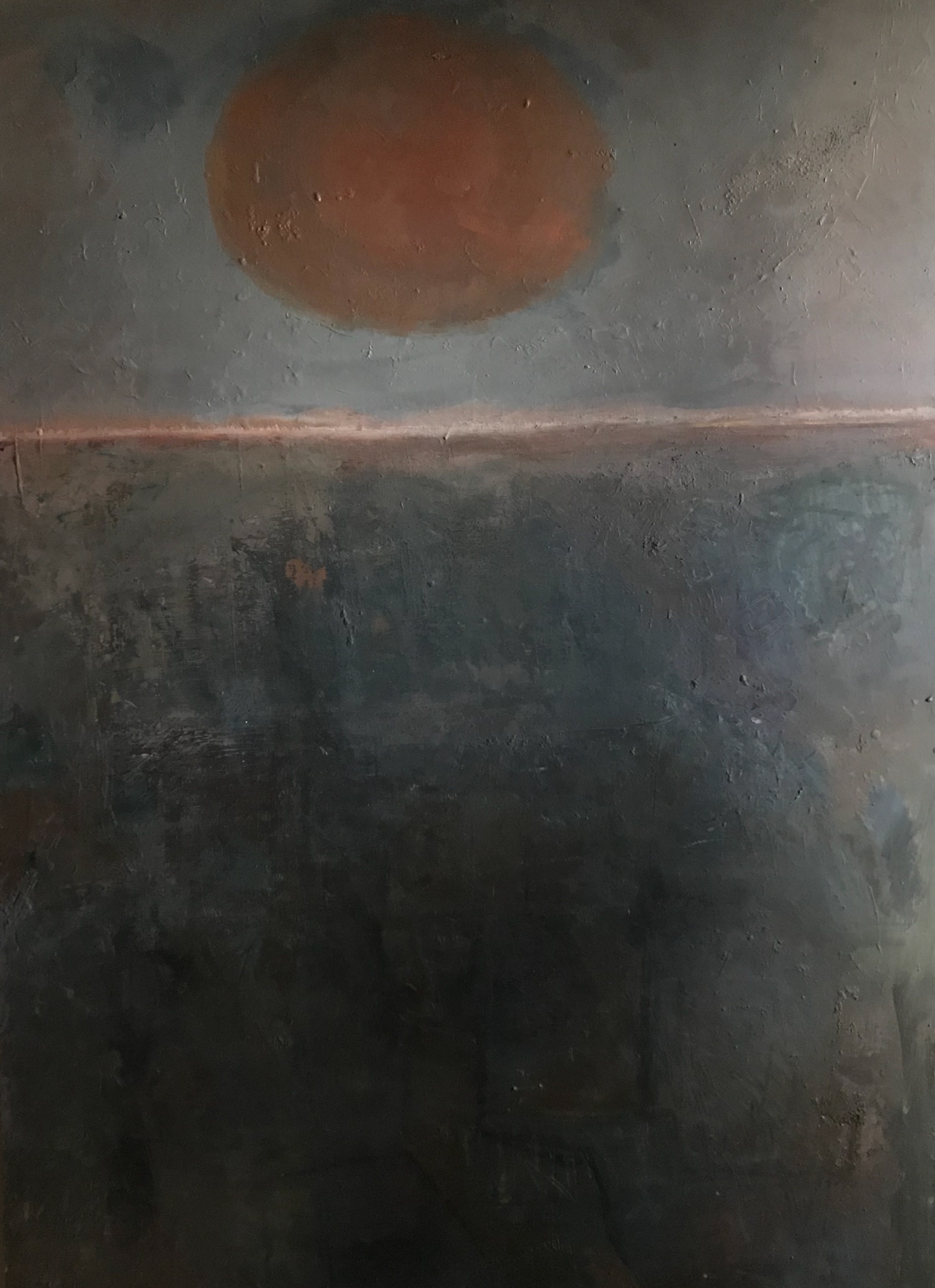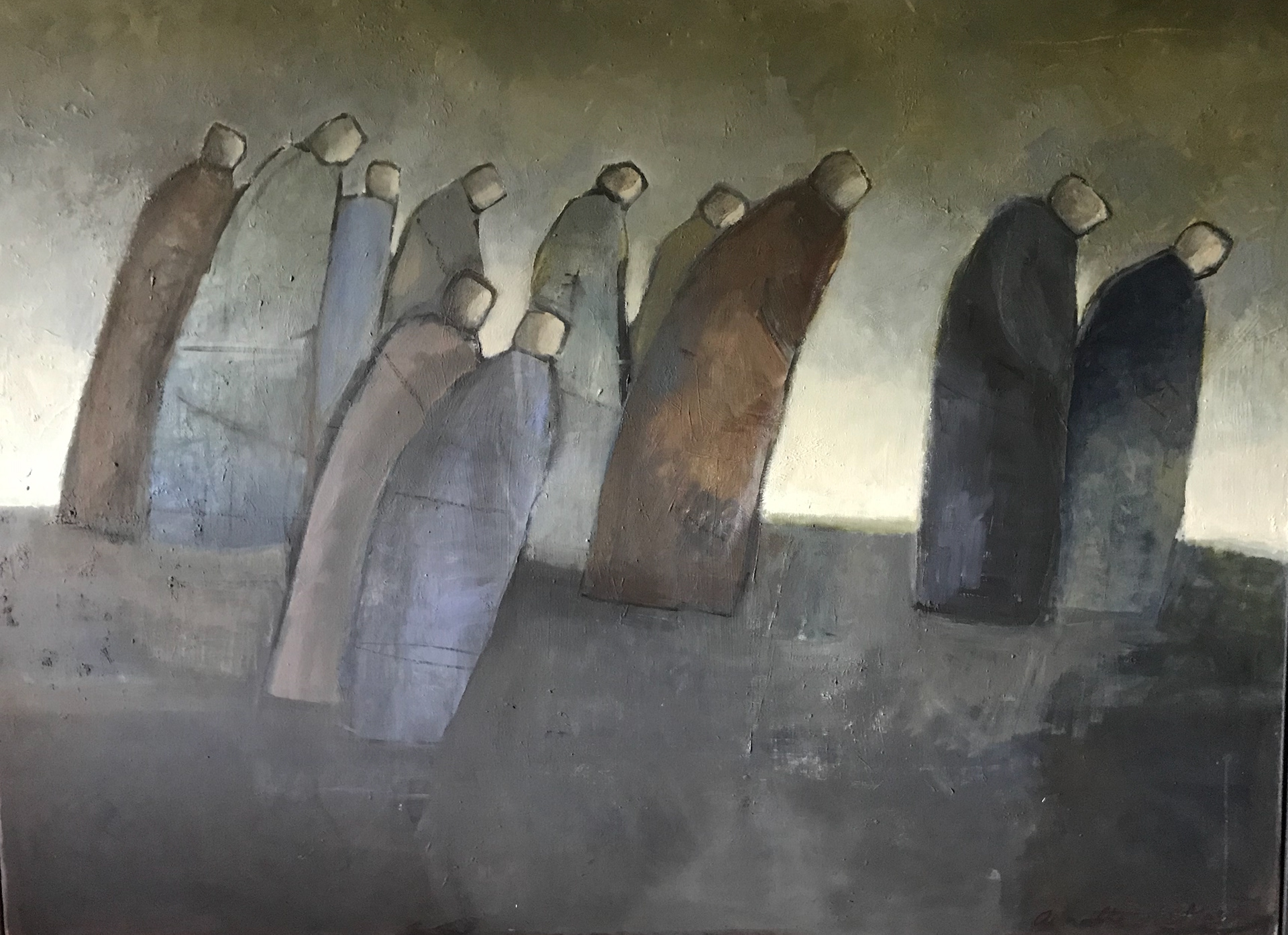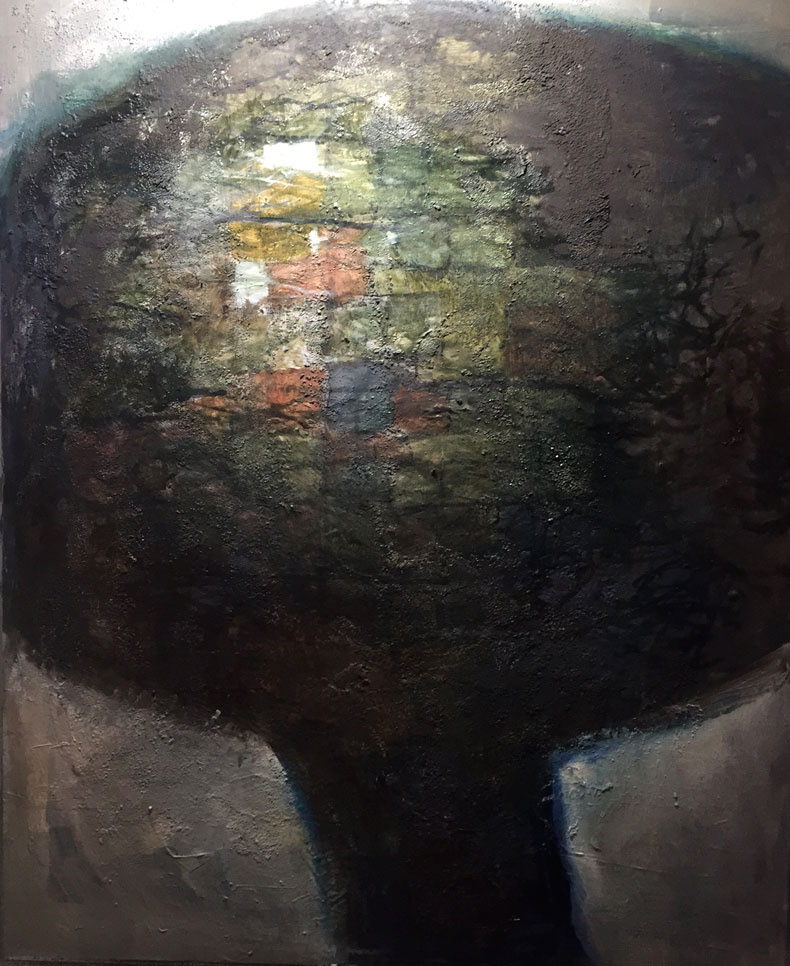Night Revelations Oil on canvas, 90 x 122cm
Gold Dust Oil on canvas, 61 x 76cm
The Breakthrough Oil on canvas, 122 x 183cm
Haloed Mount Oil on canvas, 61 x 61cm
Drawn Together Oil on canvas, 92 x 92cm
The Mountain Stands Strong Oil on canvas, 92 x 92cm
Awakening Oil on canvas, 61 x 61cm
Circle of Light Oil on canvas, 59 x 48cm
Out of the Blue Oil on canvas, 51 x 51cm
First Light Oil on canvas, 61 x 122cm
Lifting the Veil Oil on canvas, 51 x 51cm
Held in the Night No.1 Oil on canvas, 51 x 51cm
Held in the Night No.2 Oil on canvas, 64 x 54cm
Night Owl Oil on canvas, 64 x 80cm
Pointing the Way Oil on canvas, 44 x 44cm
SOLD
On the Edge Oil on canvas, 25 x 36cm
No. 1 Oil on paper
No. 2 Oil on paper
No.4 Oil on paper
No.3 Oil on paper
The Bandaged Earth Oil on canvas
Let us not be Deterred
SOLD
Grounded in the Beyond. SOLD
Weatherbeaten Hope.
SOLD
Fertile Beginnings 15cm x 100cm. oil on canvas
Let there Be Light 150cm x 100cm. oil on canvas
Softly Hovering There
SOLD
Dark Hope oil on canvas 64 x 80cm
SOLD
In Touch with the Unknown, oil on canvas 45 x 45cm
SOLD
In the Dawn of Time.
Moonlit Mirage.
SOLD

SUSPENDED IN SILENCE. oil on canvas. 57 x 68cm SOLD

'NIGHT JAR' SOLD

'BORN OUT OF DARKNESS' oil on canvas. 150 x 100m SOLD

'PASSING BY' oil on canvas. 105 x 105cm SOLD

'ASCENSION' oil on canvas. 68 x 58cm. SOLD

'AT THE DAWN OF TIME' oil on canvas. 150 x 100cm SOLD

'TOUCH DOWN' oil on canvas. 61 x 76cm SOLD

'PRESENCE' IN THE DAWN' oil on board. 97 x 67cm. SOLD

'AWAKENING' oil on canvas. 44 x 44cm

METAMORPHOSE oil on canvas. 44 x 44cm. SOLD

'THE NIGHT GUARDIAN' oil on canvas 125 x 95cm SOLD

SOLD

BLUSHING MOON SOLD

MIST. SOLD

PALE MOON. SOLD

SMALL NIGHTJAR SOLD

Perch. SOLD

FREEDOM oil on canvas 91 x 122cm

ON THE MOVE 1. oil on canvas. 125cm x 95cm SOLD

ON THE MOVE 2 oil on canvas. 125cm x 95cm. SOLD

'UNDER THE MISTY MOON' oil on board. 40 x 50cm. SOLD

'THE GET TOGETHER' oil on board 40 x 50cm SOLD

'SEEN IN PASSING' oil on board 40 x 50cm. SOLD

'PILGRIMS ' oil on board 40 x 50cm. SOLD

'THE ETERNAL MOTHER' oil on board 40cm x 50. SOLD

'THE MOON WATCHERS' Oil on board 40 x 50cm. SOLD

'TOUCHED BY GOLD ' oil on canvas 40 x 50cm SOLD

'POT FULL OF UNREALISED DREAMS'. oil on canvas 40 x 50cm SOLD

'ARISING AND ERODING' oil on canvas 40 x 50cm. SOLD

'CAUGHT BETWEEN' oil on canvas 40 x 50cm

'TURBULANCE' mixed media on paper

'RED SKY AT NIGHT'. mixed media on paper

'FLOATING BY'. ink and metal leaf n paper

'MOON GLIMPSED THROUGH STAINED GLASS' mixed media on paperMixed media on paper

'MOON STRUCK' oil on paper

'ON THE DARK SIDE OF THE MOON'. mixed media on paper

SOLD

SOLD

SOLD

SOLD

SOLD

SOLD

SOLD

SOLD

'ITHACA 2'. oil on canvas SOLD

'ITHACA 1' oil on canvas SOLD

SOLD

SOLD

SOLD

SOLD

SOLD

SOLD

SOLD

SOLD

SOLD

SOLD

SOLD

SOLD

SOLD

SOLD

THE MESSENGER

The Message

SOLD

SOLD

SOLD

SOLD

SOLD

SOLD

SOLD

SOLD

SOLD

'MORNING MIST'. oil on canvas

SOLD

SOLD

SOLD

SOLD

SOLD

SOLD

SOLD

SOLD

SOLD

SOLD
